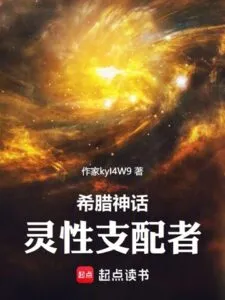I Really Didn t Mean To Be The Saviour Of The World - Chapter 725
- Home
- I Really Didn t Mean To Be The Saviour Of The World
- Chapter 725 - Chapter 725 Chapter 444 Submarine Voyage and Eternal Dilemma 5200 Words 1
Chapter 725: Chapter 444: Submarine Voyage and Eternal Dilemma【5200 Words】_1
Please continue reading on ΒOXΝʘVEL.ϹΟM .
Harrison Clark had once daydreamed countless times that if Freddy didn’t have to die, and he only had to be an information gathering tool, with a top student to guide him, the plan of wandering the world collecting information could be much easier, and life would be much more enjoyable.
Now, his dreams have come true.
But… it’s not enjoyable at all!
Since Scarlett gained access to the quantum network for more than seven months, Harrison hasn’t been slacking off.
Whenever he had some free time, he would pick up Scarlett and go through the information database she organized from the collected data streams, constantly absorbing all kinds of useful knowledge.
Since he couldn’t transmit information proactively, and could only steal in the communication data stream, Harrison didn’t have systematic training materials and could only piece together a data library.
But now, the human territory is too vast and the population too large, with huge amounts of information being exchanged externally, far exceeding the analytical capacity of Scarlett. Scarlett could only use a chaotic algorithm to intuitively grab potentially useful knowledge, categorizing the useful information with her own storage capabilities after simple analysis.
So far, Scarlett hasn’t been able to find complete training materials and can’t establish a mature education system, presenting fragmented knowledge before Harrison.
Harrison had no choice but to choose a direction and learn whatever he came across.
This made his learning laborious, wasting several months before he recently changed his mindset, focusing on the special species, mineral deposits, and peculiar phenomena discovered by the Orion Arm humans this time.
The subjects were classified into astrobiology, material science, cosmic rule studies, and other subjects.
Harrison’s thinking was straightforward and without any fancy tricks.
Human innovations, and even the previously unsuccessful technological developments, theoretically have the opportunity to develop as long as the Solar System civilization can still maintain itself, even if he doesn’t bring anything new back.
(vitag.Init = window.vitag.Init || []).push(function(){viAPItag.display(“vi_765923973”)})
However, knowledge based on secondary civilizations outside the Solar System, unique materials, and cosmic miracles can’t be imagined within the Solar System.
This time, he successfully ventured out and came into contact with countless colonies that have taken root and developed in the Orion Arm for 500 years, collecting the valuable wealth gathered by the wisdom of trillions of people over more than ten generations.
Harrison believed these were the key points.
Firstly, if he could remember the location of each planet with available resources, after going back, he could incorporate this information into The Madman’s Conjectures Collection, or even shamelessly use science fiction novels or movie series to directly mark these planets.
Once humans reach beyond the Solar System in the 24th or even 23rd century, the information left by Harrison will become a treasure map filled with markings.
Knowing which star systems have valuable resources and which are simply giveaways, as well as which stellar regions contain natural disasters that can easily destroy fleets, humans will be able to head straight to their destinations along the treasure map, saving time, reducing casualties, and further accelerating the development of the Galactic Human civilization outside.
On the other hand, Harrison could also incorporate some of the “standard answers” he had thoroughly learned into history.
He wondered whether future generations living under the physical rules of the Solar System and in the environment most compatible with humans could come up with brilliant ideas on their own, based on the knowledge they shouldn’t have acquired, without knowing the outside world.
But there is a problem here.
It’s almost impossible to find two identical stars in the universe. There will always be subtle differences, such as mass, density, composition, or the stage of life.
Different stars will release different radiation, particle streams, gravitational fields, magnetic fields, etc., resulting in numerous varying parameters.
Although humans can simulate an environment infinitely close to Earth’s surface by changing various parameters, there is one thing they cannot simulate.
There are quantum collapse vortex storms on phosphorus atoms in the human brain and stars alike, with even stronger effects and coverage basically consistent with the gravitational field range.
If someone were standing hundreds of thousands of light-years above the Milky Way Galaxy, basically escaping the gravitational field range of every star within the Galaxy, they would still not be able to escape the gravitational field of the galactic center black hole or the omnipresent background gravitational field of the universe.
Unless humans hide in curvature subspace, they are constantly within the radiation range of these quantum storms.
When the same person is under the cover of different stellar gravitational fields, their thought storms will be influenced more or less by the external environment, showing subtle differences, reflected in the underlying structure of logical thinking and concretely in different views on the same issue.
These differences are small and almost imperceptible, but they objectively exist and continue to intensify over time.
To exaggerate, after infinitely magnifying the cognitive biases of people growing up in different star regions, it is equivalent to 2D life never being able to understand what “height” is in terms of length and width.
Harrison had never considered the issue of cognitive bias before.
It was enough that the trillions of people spread across 14,400 colonial star systems were still united in the face of the Compound-Eyed Observer.














